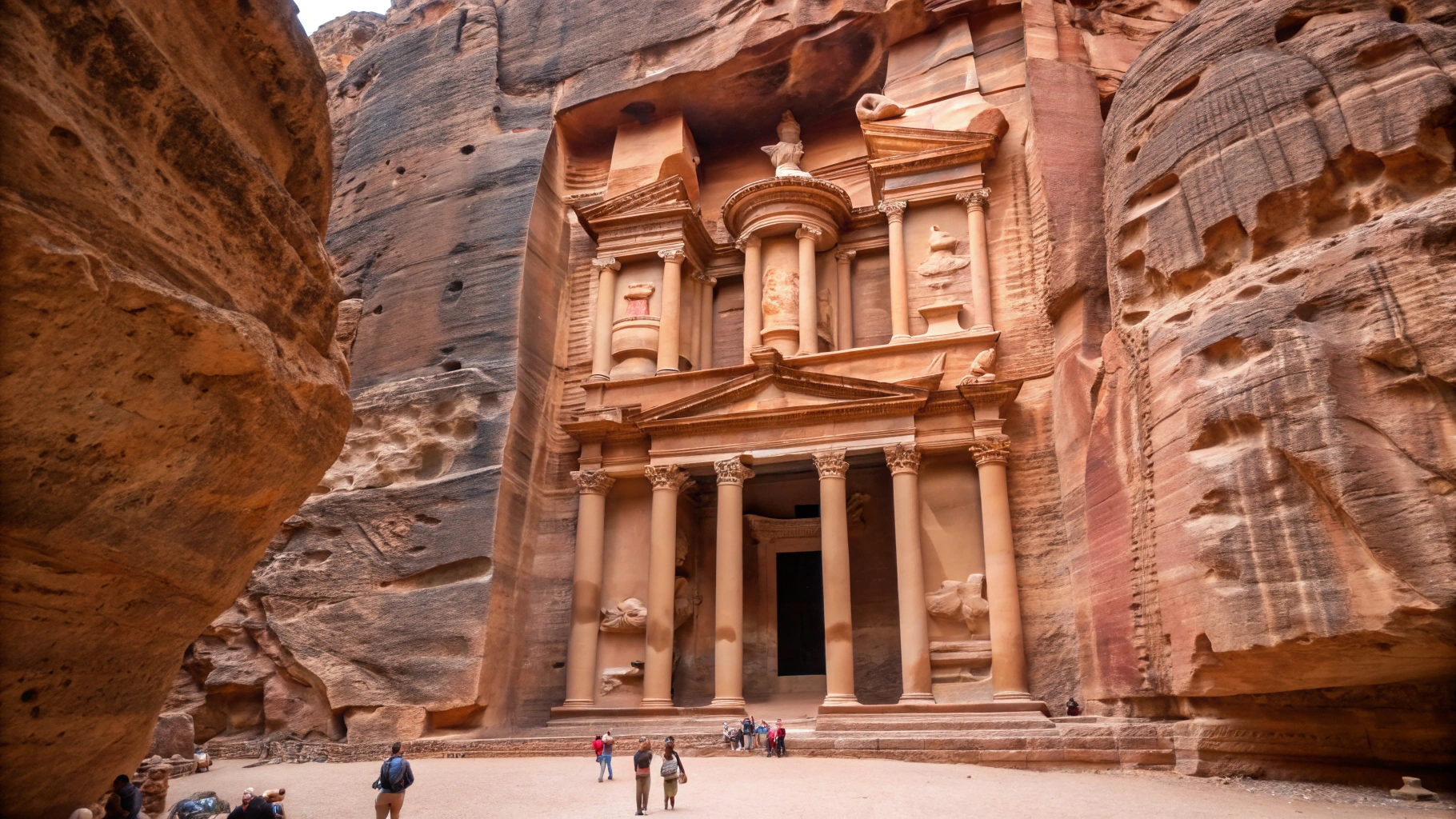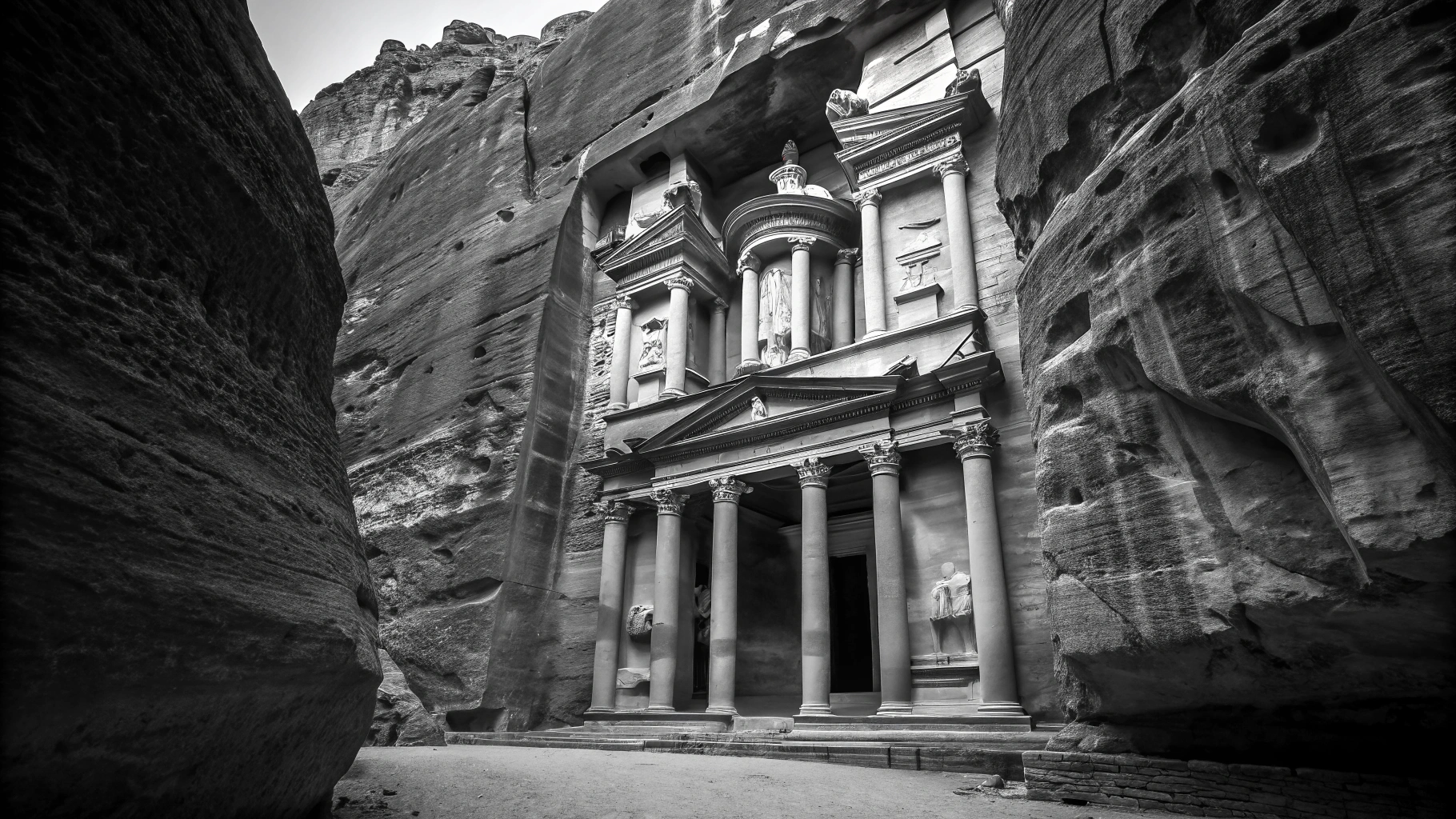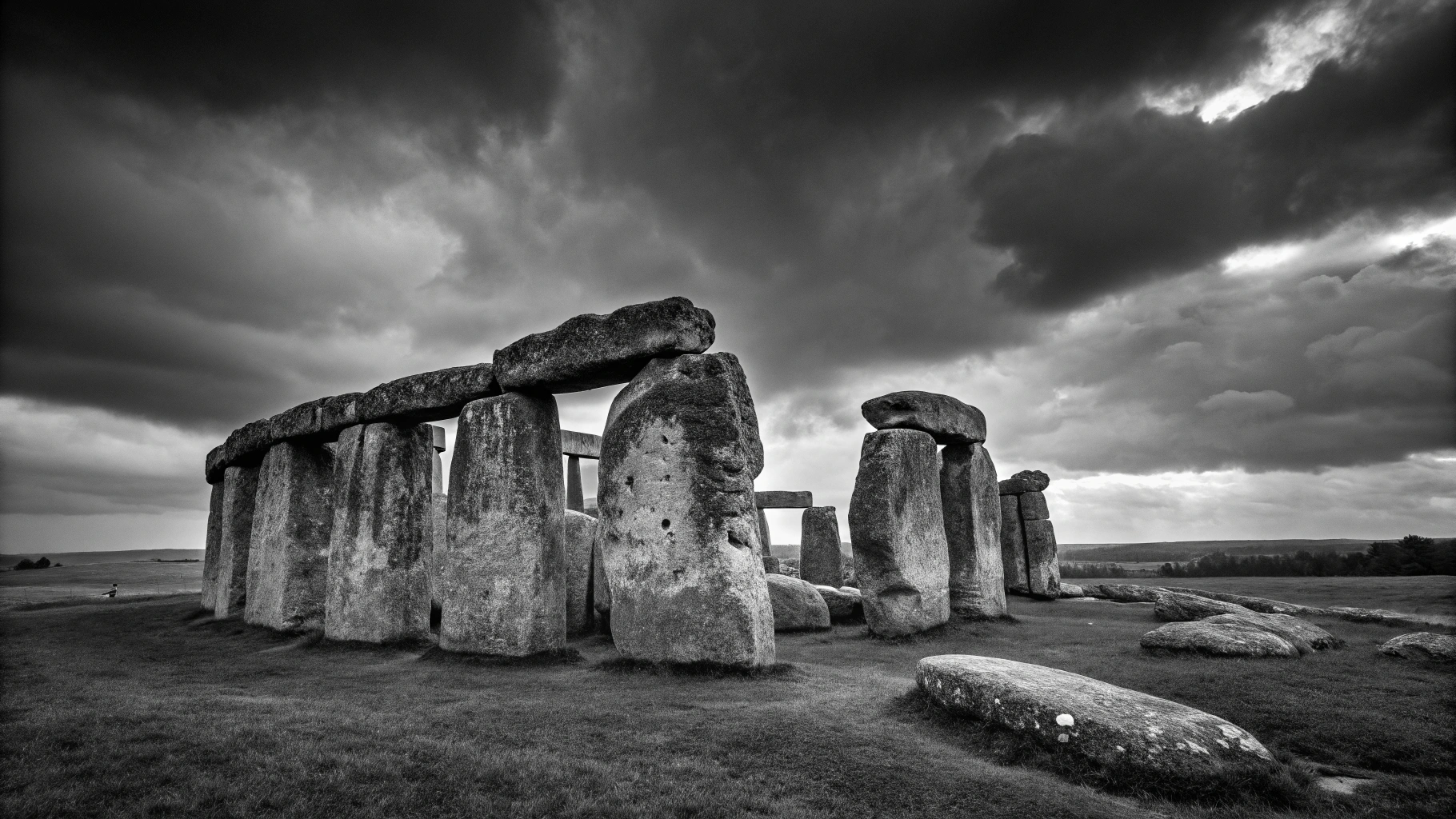I created 27 AI images of real-world landmarks — here's the results

I create hundreds of artificial intelligence images every week, sometimes thousands and one project I’ve wanted to embark on for some time is capturing the real world with AI. Many of the models are featured in our best AI image generator guide.
AI models are trained on vast amounts of information, from text descriptions and labels to images and videos. In theory, it should be able to replicate images of the most famous landmarks from around the world relatively easily.
One of the best, and most photorealistic models I’ve used recently is Recraft v3 from Recraft and as it is now available through API, making bulk image generation much easier. I decided to create 21 images of 7 iconic landmarks from around the world to see how well it performs.
Creating the image prompts
The first task in creating the prompts of famous landmarks was to come up with the landmarks. They need to be visually identifiable, and interesting and for the concept, they also had to work with different photography styles.
I created a descriptive prompt for each of the 7 locations, then three ‘style’ prompts to append to the descriptive prompt. This included camera type, motion, and visual effects.
The three style prompts are the same for each location. I first generated an image with the base prompt, then one in black and white, another as if it were from a cheap smartphone camera and a third that should resemble a high-quality DSLR with perfect lighting.
1. Petra, Jordan

Petra astounds me every time I think about it. I’ve previously made it the subject of an AI-generated short film and was my first choice in this list as its easy to depict and AI models tend to get it right pretty much all of the time.
Get instant access to breaking news, the hottest reviews, great deals and helpful tips.
Base: "Massive ancient stone temple facade carved into towering red sandstone cliff face, 130 feet tall with Hellenistic columns, triangular pediment, intricate decorative friezes and reliefs, stone weathered with natural textures, narrow canyon walls visible on sides"

Smartphone: [Base] + "Amateur tourist photo taken from ground level, slightly tilted angle, other tourists visible for scale, harsh midday lighting, typical phone camera oversaturation of warm tones"

Professional: [Base] + "Golden hour DSLR photograph, perfect front-on composition, soft directional light emphasizing architectural details, 16-35mm wide angle lens, f/8, leading lines from canyon walls"

Black & White: [Base] + "Dramatic black and white photograph with deep shadows in canyon, bright highlights on facade details, shot on large format film with rich contrast range and sharp detail"
2. Angkor Wat, Cambodia

A stunning and easily recognizable landmark, Angkor Wat in Cambodia is a draw for tourists around the world. It is also a great one for prompt testing as it will be heavily featured in training datasets.
Base: “Angkor Wat Cambodia ancient temple complex with five ornate pointed towers in lotus formation with intricate bas-reliefs covering grey stone walls symmetrical architecture surrounded by lush tropical vegetation perfect reflection in still water stone steps leading to central sanctuary photorealistic”

Smartphone: [Base] + "Quick snapshot of Angkor Wat taken through tour bus window, slight reflection visible, temple appears small in frame, typical phone camera noise in shadowy areas"

Professional: [Base] + "Pre-dawn professional photograph of Angkor Wat with perfect reflection in moat, stars visible in sky, 30-second exposure on tripod, medium aperture for front-to-back sharpness"

Black & White: [Base] + "Moody monochrome capture of Angkor Wat at dawn, mist rising from the moat, silhouetted against brightening sky, medium format film aesthetic with rich tonal range and subtle grain"
3. Machu Picchu, Peru

An ancient stone citadel built into a mountain ridge, it is one of the most widely photographed landmarks in the Americas. It worked surprisingly well in the different styles.
Base: “Machu Picchu Peru ancient stone citadel built on mountain ridge with precise mortarless granite blocks agricultural terraces descending mountain slopes steep green mountains in background geometric stone buildings and temples llama in foreground photorealistic”

Smartphone: [Base] + "Slightly tilted tourist photo of Machu Picchu taken from main viewing point, other visitors' heads visible at bottom of frame, slight camera shake, automatic HDR processing visible"

Professional: [Base] + "Ultra-wide panoramic shot of Machu Picchu at first light, llama in foreground, low-lying clouds in valley, focus stacked for sharpness throughout, shot with high-end DSLR and premium glass"

Black & White: [Base] + "Classic black and white landscape photograph of Machu Picchu in morning mist, dramatic clouds swirling around mountain peaks, shot on large format film with intense detail and full tonal range"
4. Taj Mahal, India

Heading to India for the next challenge. The Taj Mahal is a marble mausoleum that was commissioned in 1631 as a tomb for the wife of then Mughal emperor Shah Jahan. The black and white worked particularly well.
Base: “Taj Mahal India symmetrical white marble mausoleum with large central dome four corner minarets intricate Islamic patterns inlaid with precious stones long reflecting pool in foreground manicured gardens perfect mirror reflection architectural masterpiece photorealistic.”

Smartphone: [Base] + "Quick tourist snap of Taj Mahal from garden path, crowds visible, harsh midday light, typical phone camera oversaturation of sky"

Professional: [Base] + "Blue hour professional photograph of Taj Mahal reflected in still pool, bracketed exposures, perfect symmetry, shot at f/11 for optimal sharpness"

B&W: [Base] + "Fine art black and white photograph of Taj Mahal through marble arch, early morning fog adding atmosphere, extreme detail in marble work, printed on silver gelatin paper style"
5. Great Wall of China, China

An incredible feat of engineering, the Great Wall of China is more than 13,000 miles long and the first fortifications were constructed during the 7th Century BC. All three images came out well but the differences were more stark than with other prompts.
Base prompt: “Great Wall of China ancient fortified wall traversing mountain ridges stone watchtowers spaced along battlements wall following natural terrain autumn forest surroundings wall extending to horizon historic architecture photorealistic”

Smartphone: [Base] + "Casual phone photo of Great Wall taken while hiking, slightly out of breath perspective, other tourists visible, blown-out sky due to auto exposure"

Professional: [Base] + "Autumn sunrise photograph of Great Wall with fog in valleys, fall colors in surrounding forests, shot with a telephoto lens to compress perspective, perfect golden light"

B&W: [Base] + "Dramatic black and white landscape of Great Wall undulating across mountain ridges, storm clouds gathering, high contrast printing style emphasizing the wall's serpentine path"
6. The Parthenon, Greece

Our next stop is Greece where we capture (or at least imagine using AI) the Parthenon. Once you’ve got the modern image you could ask AI to adapt it and show it as it was when it was built more than 2,400 years ago.
Base prompt: “Parthenon Acropolis Greece classical Greek temple complex atop rocky hill massive Doric columns supporting Parthenon weathered marble architecture multiple ancient buildings on plateau modern city visible below Mediterranean atmosphere photorealistic”

Smartphone: [Base] + "Tourist perspective phone shot of Acropolis from street level, modern Athens visible, slight lens flare from bright sun, typical smartphone dynamic range limitations"

Professional: [Base] + "Blue hour professional photograph of Acropolis lit by architectural lighting, city lights of Athens below, shot with tilt-shift lens for perfect perspective control"

B&W: [Base] + "Classical black and white architectural study of Parthenon columns, strong side lighting emphasizing fluting details, shot on large format film for maximum detail"
7. Moai of Easter Island

Moai are monolithic statues carved about 1,500 years ago and are an iconic tourist attraction drawing people to Easter Island from all around the world. They also make for a great AI image or project. You could ask the AI to depict what is under the soil.
Base: “Moai Easter Island Chile monumental stone statues with elongated heads and stern expressions strong facial features carved in volcanic rock statues arranged on stone platform windswept coastal grassland ocean horizon moody sky photorealistic”

Smartphone: [Base] + "Quick tourist snapshot of moai from walking path, people visible for scale, slightly crooked horizon, typical phone camera color rendering"

Professional: [Base] + "Pre-dawn professional photograph of moai silhouetted against Milky Way, star trails visible, multiple exposure blend, perfect composition with leading lines"

B&W: [Base] + "Dramatic black and white photograph of moai at sunset, strong side lighting creating deep shadows, shot on medium format film emphasizing texture and scale"
8. Stonehenge, England

Stonehenge in Salisbury, England is one of the oldest on the list, with the earliest construction starting about 3,000 BC. It is the simplest but one of the most remarkable landmarks. This was also the one that led to the biggest differences between images.
Base prompt: “Stonehenge England ancient circular monument of massive standing stones arranged in concentric rings with horizontal stone lintels connecting vertical megaliths mysterious neolithic structure on grassy plain under dramatic sky ancient astronomical alignment sacred prehistoric architecture photorealistic.”

Smartphone: [Base] + "Tourist photo through protective barrier, other visitors posing by fence, slightly tilted horizon, typical phone camera oversaturation of green grass"

Professional: [Base] + "Golden hour professional photograph, sun aligned with stone circle, long shadows across grass, drone perspective showing complete circular formation, perfect composition"

Black & White: [Base] + "Dramatic black and white photograph at dawn, low-lying mist around base of stones, moody clouds overhead, medium format film capturing texture of ancient rocks"
9. Mount Rushmore, U.S.

Finally, we come to North America and Mount Rushmore. A massive sculpture in the side of Mount Rushmore featuring four American presidents. This probably came out the worst of the images I generated. The base version has one too many heads, for example. The pro version isn't too bad.
Base prompt: “Mount Rushmore South Dakota USA massive granite faces of four American presidents carved into Black Hills mountain presidential sculptures showing Washington Jefferson Roosevelt and Lincoln towering scale intricate detail in facial features surrounded by pine forest mountain landscape photorealistic.”

Smartphone: [Base] + "Quick tourist snapshot from main viewing plaza, American flag in foreground, people visible on viewing platform, typical phone camera contrast against bright sky"

Professional: [Base] + "Sunrise professional photograph, early morning fog in valley below, golden light on granite faces, telephoto compression emphasizing monumental scale, perfect composition"

Black & White: [Base] + "Dramatic black and white photograph with storm clouds gathering, strong directional light emphasizing carved facial features, large format film capturing mountain texture"
Final thoughts
I started the journey asking the question of whether AI image models were able to recreate images of real locations in different styles. The answer is yes, but they're not perfect. Some of the images had too many faces, missing stones and more.
If you really want to have images of the world its still best to look out for the work of people that have been to these places or, if possible, go yourself. But its nice to go on a visual diversion with the help of AI.
More from Tom's Guide
- I tried astrophotography on my iPhone 16 Pro Max to shoot galaxies, nebulas, and star clusters — these were my best captures
- How to monitor Apple Intelligence activity on your iPhone
- The widget you've always wanted comes to your Mac menu bar in Sequoia 15.2

Ryan Morrison, a stalwart in the realm of tech journalism, possesses a sterling track record that spans over two decades, though he'd much rather let his insightful articles on AI and technology speak for him than engage in this self-aggrandising exercise. As the former AI Editor for Tom's Guide, Ryan wields his vast industry experience with a mix of scepticism and enthusiasm, unpacking the complexities of AI in a way that could almost make you forget about the impending robot takeover.
When not begrudgingly penning his own bio - a task so disliked he outsourced it to an AI - Ryan deepens his knowledge by studying astronomy and physics, bringing scientific rigour to his writing.










